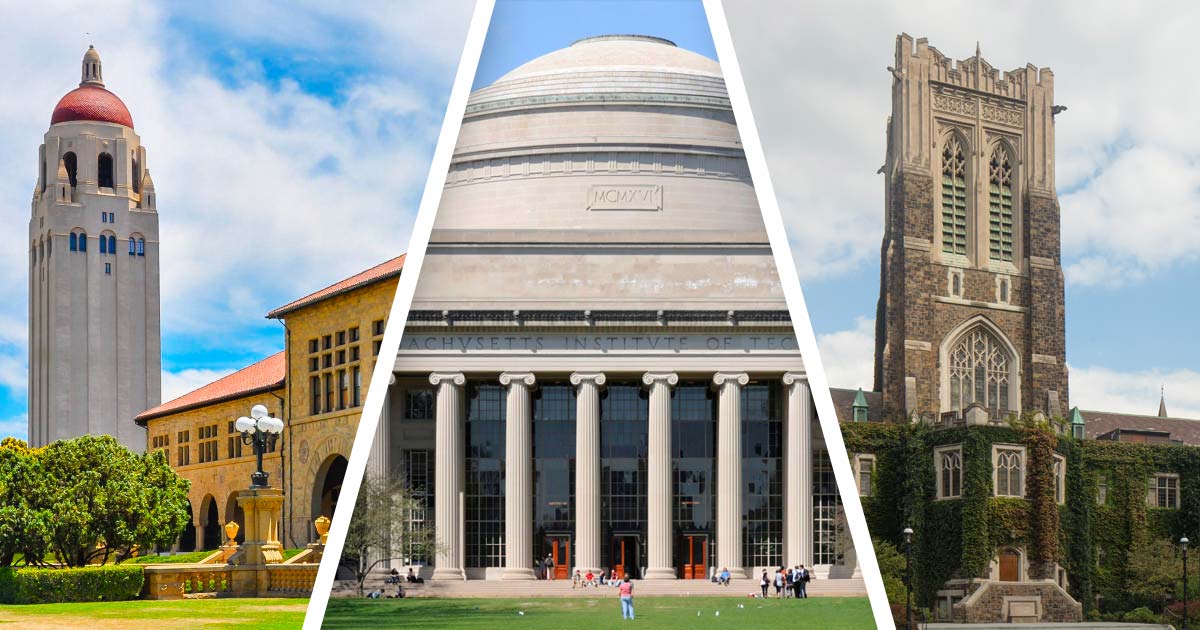Top-Ranked Colleges Making the Most of Your Investment

Frequently, a brighter future is meant by investment in college. People with a bachelor’s degree earn a median weekly income of $1,305 compared to high school graduates who earn only $781 per week, according to the Bureau of Labor Statistics. However not all colleges are worth the investment.
Since 1980s college costs have skyrocketed; tuition at public universities has risen by 213% while private schools increased by 129%. So what’s the bottom line? You need to choose wisely.
But how do you know which schools offer great value for money? We’ve ranked institutions according to net price; graduation rates; earning potential and more, so that you can find your perfect college match.
Colleges That Make Financial Sense
Let’s start with six higher ed institutions that deliver an excellent return on investment (ROI). These schools not only produce graduates with high median annual salaries that cover their original outlays but also boast strong completion rates which enhance the market value of their degrees. Additionally, we’ve ensured diversity among acceptance rates and locations in order to accommodate students from different academic backgrounds.
Massachusetts Institute of Technology (MIT)
- Net Price: $20,465
- Tuition: $53,790
- Financial Aid Recipients: 74%
- Acceptance Rate: 7%
- Graduation Rate: 95%
- Employment Rate Two Years After Graduation: 94%
- Median Earnings Six Years After Graduation: $104,700
Standout programs at MIT include business administration; computer science and engineering; electrical engineering & computer science; mechanical engineering; physics (course 8). Students can also pursue dual degrees or minors through cross-registration agreements between MIT’s five schools (School of Engineering; School of Science; Sloan School of Management; School of Architecture + Planning). Even though tuition is steep here — about five times higher than other top-ranked colleges surveyed for this study — financial aid packages are generous enough that many students don’t pay full freight. In fact, 74 percent of undergraduates receive need-based scholarships from MIT itself or other sources (including grants from federal or state governments). With its strong focus on research and innovation as well as collaborative problem solving skills among diverse student populations, it’s easy why MIT is often ranked among the nation’s best colleges overall in various disciplines such as engineering and natural sciences.
Stanford University
- Net Price: $16,779
- Tuition: $53,529
- Financial Aid Recipients: 70%
- Acceptance Rate: 4%
- Graduation Rate: 94%
- Employment Rate Two Years After Graduation: 94%
- Median Earnings Six Years After Graduation: $94,000
Located just a short drive away from San Francisco, Stanford offers students an unbeatable combination of great academics and even better weather. As one would expect with such prestigious name recognition around the world; this college has some seriously impressive numbers when it comes down to things like graduation rates (in fact clocking at over ninety five percent) employment success post college completion (around ninety four percent securing jobs within two years) average salaries earned six years after receiving their degrees which are close or above one hundred thousand dollars annually depending upon major chosen by individual applicant .
Lehigh University
- Net Price: $26,631
- Tuition: $56,980
- Financial Aid Recipients: 69%
- Acceptance Rate: 32%
- Graduation Rate: 90%
- Employment Rate Two Years After Graduation: 95%
- Median Earnings Six Years After Graduation: $81,900
Lehigh University, which is located in Bethlehem, Pennsylvania, is a great value with good median earnings and a welcoming campus with small class numbers and committed faculty.
Rice University
- Net Price: $20,335
- Tuition: $52,070
- Financial Aid Recipients: 69%
- Acceptance Rate: 9%
- Graduation Rate: 93%
- Employment Rate Two Years After Graduation: 92%
- Median Earnings Six Years After Graduation: $65,400
Known as the “Ivy League of the South,” Rice University offers above-average earning potentials along with a unique residential college experience, all while combining status and support.
Drake University
- Net Price: $30,265
- Tuition: $45,734
- Financial Aid Recipients: 100%
- Acceptance Rate: 68%
- Graduation Rate: 81%
- Employment Rate Two Years After Graduation: 95%
- Median Earnings Six Years After Graduation: $58,300
Drake University is distinguished by its cost-effectiveness and post-graduation assistance, which are best demonstrated by its creative J-Term programme and robust alumni network.
Gonzaga University
- Net Price: $36,578
- Tuition: $45,140
- Financial Aid Recipients: 99%
- Acceptance Rate: 62%
- Graduation Rate: 85%
- Employment Rate Two Years After Graduation: 94%
- Median Earnings Six Years After Graduation: $56,100
Gonzaga College is a good investment because of its scholarships and vibrant campus life. The university provides extraordinary after school activities that are filled with learning while at the same time bringing in students from every corner of the globe.
In general, these schools have the most bang for your buck when it comes to spending on higher education because they offer an array of scholarships and grants, top-notch teaching staffs as well as bright prospects afterwards. What this means is that if individuals are well-informed about what paths lie ahead during their study years then professional success shall follow them later down in life.

Associate Writer • Social Media and Cultural Trends Writer
Sebastian creates compelling posts, topics, and reviews of social media and cultural trends to help readers on what’s in and what’s out.

